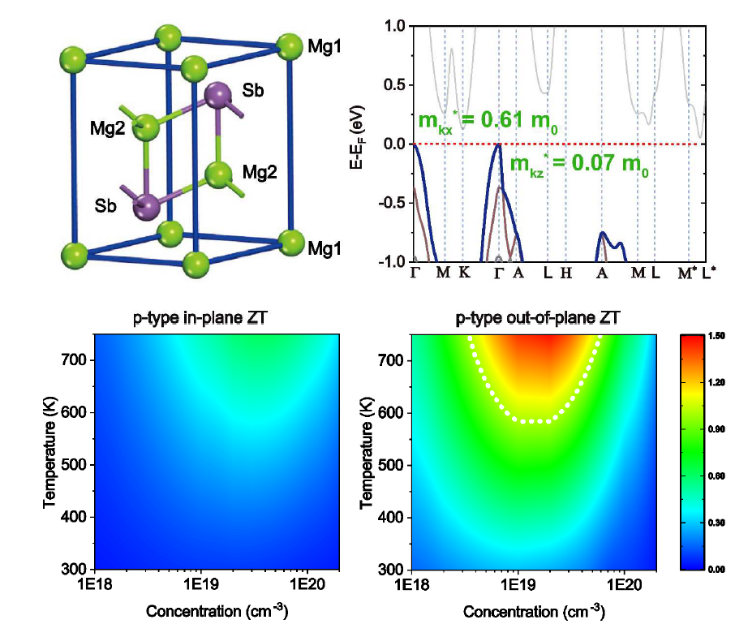Thermoelectric (TE) materials enable direct energy conversion between heat and electricity for applications of power generation and solid-state refrigeration. Mg3Sb2 is one of the promising TE materials. According to the existing experimental results, the maximum ZT value of the n-type Mg3Sb2 is about 1.85 at around 720 K, while the p-type ZT is only about 0.8. From the practical point of view, in order to achieve the best generation efficiency of TE devices, the parent material needs to have comparable ZT values for both n-type and p-type counterpart.
Considering that most of the experimental data were measured from Mg3Sb2 polycrystalline system, Dr. Wu Li's group employed the state-of-the-art first-principles approach to calculate the thermoelectric properties along the different principal axes of single crystalline Mg3Sb2. It was found that the ZT of n-type Mg3Sb2 was nearly isotropic, and the ZT value was in good agreement with the experimental data. For the p-type counterpart, the strongly anisotropic effective mass near the band edge leads to an anisotropic ZT. In the direction of perpendicular to the ab plane, the ZT value can reach 1.5 at 750K, which is much higher than that reported in previous experimental studies in the polycrystalline system. This study provides a feasible way to improve the thermoelectric performance of p-type Mg3Sb2, that is, to improve the ZT of polycrystalline p-type Mg3Sb2 through oriented textured structure.

(Fig. (a)Crystal structure. (b)Band structure. (c) In-plane ZT. (d) Out of plane ZT.)
The results were published in Materials Today Physics 13, 100217 (2020), entitled "Anisotropic thermoelectric figure-of-merit in Mg3Sb2". The first author of the paper is Fanchen Meng, co-advised by Dr. Wu Li and Prof. Jian He from Clemson university (USA). Fanchen was awarded the 2018 international thermoelectric society (ITS) Summer Fellowship to conduct summer research at Wu Li’s group (https://ias.szu.edu.cn/info/1019/2280.htm). Collaborators include Dr. Songsong Sun, Dr. Jinlong Ma (now working at Huazhong University of Science and Technology), Prof. Jian He and C. Chronister from Clemson University. The research was supported by the Natural Science Foundation of China and the Shenzhen Science, Technology and Innovation Commission.
Since 2008, Dr. Wu Li has been engaged in the research of thermal, electrical and thermoelectric transport properties. By developing calculation methods and tools, he has greatly advanced the fields including nanoscale heat transfer and thermoelectric materials.
Paper link:
https://www.sciencedirect.com/science/article/pii/S2542529320300419


